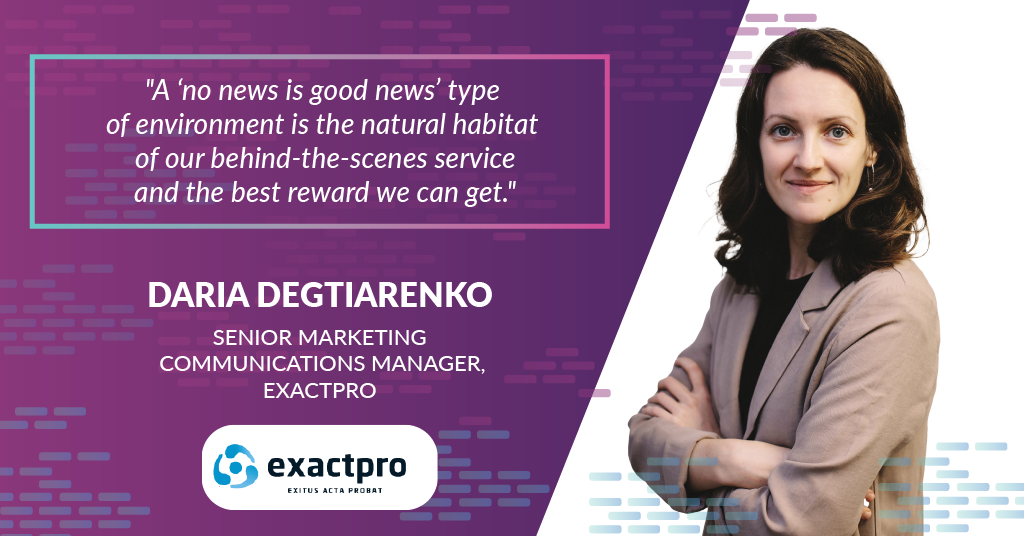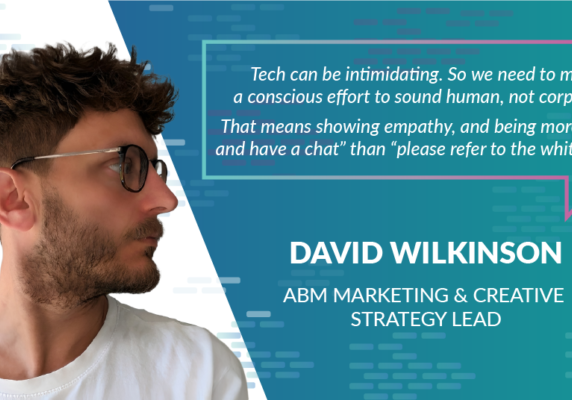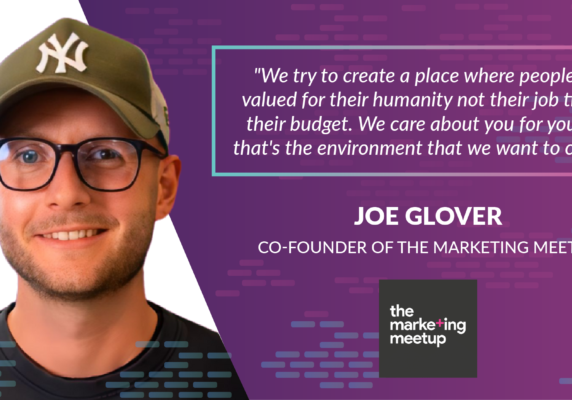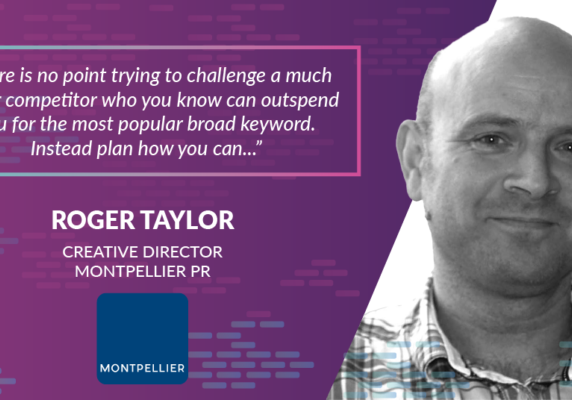Positively Negative: How Bad News Helps Build Higher-quality Solutions
Daria Degtiarenko, Senior Marketing Communications Manager at Exactpro shares with us her approach on communicating to clients the “positive, successful news” of finding a flaw in their system.

In the financial technology testing space, brand-building efforts are devoid of the pleasure of immediate gratification that service providers enjoy in the retail space. For one thing, most of our clients’ identities are protected by non-disclosure agreements, which means we cannot rely on their support via official corporate channels. On top of that, fintech projects take months to start, stakeholders are not one person whose behaviour can be studied or modelled, conversion cycles are complex and long, to the point of not being completely transparent or traceable. There is also one last challenge – our main business involves breaking our clients’ technology.
Your System Is Dead. Long Live The System
People are not always quick to ask for professional help, not even when it comes to their own health. According to the study titled ‘Delays in Initial Treatment Contact after First Onset of a Mental Disorder’, people with a lifetime mental health disorder can take up to a decade to reach out for help.¹
Thankfully, ‘identifying all significant risks to […] operation’² is not only a recommended best practice, but also a compliance obligation for regulated firms, which all our clients are or are setting out to become. The way to mitigate the operational risks in a large-scale financial system is to find exactly what its current breaking points are and proactively address them. Naturally, bringing down a system is a deliberate and quantifiable process, with myriads of functional and non-functional parameters being controlled as the system crash is achieved by the software testing team, on multiple occasions. After the relevant parameters and insights are extracted, we communicate them to the stakeholders, who then decide on an action plan to improve the capacity, availability and scalability of their infrastructure, also facilitated by our team.
As illustrated by this simplified view of the testing princess, our goal is proving that there are flaws in the system that its stakeholders never considered faulty in the first place. Our prospective client has to go through the stages of acceptance of inherent defects in their system, look to get outside help, set up inter-team collaboration, then study, triage and prioritise the detected defects, getting some of them fixed – and having the insight, the expertise and the benchmarks to be able to rule the rest out as non-critical. After all that, they would still be left with the realisation that, due to the non-determinism of the system, a rare race condition or configuration misalignment may bring any one of the components tumbling down one day.
An example of our ‘satisfied client’ is a firm that does not make the headlines in the context of a trading venue outage and respective loss of their clients’ funds. A ‘no news is good news’ type of environment is the natural habitat of our behind-the-scenes service and the best reward we can get.
Where Does That Leave Marketing Communications?
Indeed, how does one make ‘your perfectly good system is bound to fail, let us exacerbate that’ into an appealing marketing pitch? There are several principles we rely on that have helped us throughout the years to get our point across well enough to attract prospects’ attention.
WYRIWYG (What You Read is What You Get)
One of the main principles of our communications is being candid about who we are and what we bring to the table, let’s call it the proverbial WYRIWYG. Exactpro is an ‘information’ service: extracting objective system-specific information about potential defects is our main goal and deliverable. That phrasing implicitly communicates our second principle – using a fair bit of technical language and not oversimplifying the message. Sounds counterintuitive? It is.
Right from the outset, our clients see that the level of detail we will go down to, together, is fairly extensive, sometimes exceeding their expectations. There are cases where software testing
expertise drives development forward. When the team gets to join a nascent project early in the software delivery lifecycle, the work they do may take the client deeper into the complexity of their infrastructure than they would have gone on their own. We owe this to our experience working with the world’s top financial technology firms and having the capacity to collate and transfer expertise from project to project. Trusting our audience to receive the message in this exact form also helps us not to over-promise, not to oversell prospects or the general audience on the ease or simplicity of the work we do.
In Reader We Trust
The unique part of a software-type offering is that the underlying approach may not fundamentally change depending on the system it is applied to. Drawing a parallel with consumer electronics, we can imagine our test framework matching the complexity of a toaster, a hand-held vacuum cleaner, or a smart home platform, depending on the scale of the infrastructure it serves.
Appealing strictly to the existing mental models of the implementations may limit the highly malleable capabilities of the solution to the scarce few. This makes it crucial for our communications to have to balance use-case specifics with a generalised ‘big picture’ of the applications and benefits of our service and its underlying approaches. We rely on our prospective client to see their system among the ones we name explicitly, but we also trust them to be technology savvy enough to be able to recognise a potential use case in the ‘raw’ view of the offering and start a conversation with us.
Mind The Gap, Bridge The Gap
As we have found out over the years, there is a significant gap between the need for end-to-end software testing and the articulated demand for it. Regulated market operators are tied up in compliance reporting, product governance, and frequent regulatory changes that need to be accounted for and reflected in their financial solutions. With the speed that such changes persist, it makes sense for firms to want to tick the coveted compliance boxes and proceed with other more strategic tasks. So, inevitably, a lot of our messaging is directed towards debunking the myth of quick fixes and out-of-the box solutions in this space. A zero-trust approach and learning our own way through the entire system is the only way that makes independent software testing work.
Seeing The Funnel Half-full
With the specifics of system complexity and technical detail intertwined into our messaging, we stand to highlight the positive outcome of our team’s work – qualitative improvement of the system we test, enhanced operational resilience, capacity, and robustness, expanded leeway against volatility and unpredictable events and more confidence in planning for future growth.
Our communications may not cater for all, and the journey we embark on with a client may not be one paved with rapturous epithets. It is, however, one of honesty, mutual trust, responsibility, building strength and sharing a relentless desire for making our client’s technology assets better.
Daria Degtiarenko is a Senior Marketing Communications Manager at Exactpro, a software testing company. You can contact Daria on LinkedIn.
1 Wang PS, Berglund PA, Olfson M, Kessler RC. Delays in initial treatment contact after first onset of a
mental disorder. Health Serv Res. 2004 Apr. PMC – PubMed
2 MiFID II. Article 19 – Specific requirements for MTFs. European Securities and Markets Authority.






